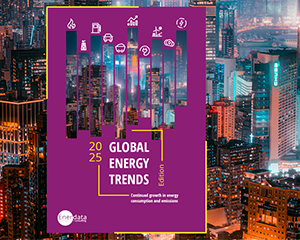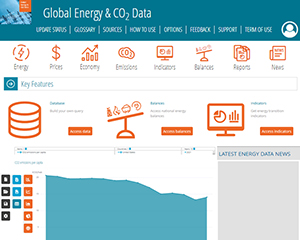CO2 intensity
Global CO2 intensity rebounded in 2024 (+1.7%), even slower than in 2020.
-35%
Decrease in China’s CO2 intensity between 2010 and 2024.
Global CO2 intensity rebounded in 2024 (+1.7%), even slower than in 2020.
In 2024, the global CO2 intensity (CO2 emissions per unit of constant GDP) rebounded by 1.7%, contrasting with a 1% drop in 2023 and an average 2.2%/year decline over the 2010-2019 period. In 2024, it stood 24% below its 2010 level.
This rebound is due to a significant slowdown in improvements in the USA (-3% in 2024 after -6% in 2023) and in Europe (-4% after -9% in 2023), closer to their 2010-2019 average trend, even if their energy intensity has decreased by more than 40% since 2010 and remains well below the global average (-19% and -54%, respectively). CO2 intensity dipped in China (-2.5% vs. -4%/year over 2010-2019, still 68% above the global average) and in India (-1%, still 15% above the global average) whereas it increased in Indonesia (+3%), Vietnam (+6%) and South Africa (+4%).
Higher renewable power generation contributed to cut the CO2 intensity in the US, Canada (-2.5%), Brazil (-2%), and Japan (-2%), while CO2 intensity declined in Russia amidst strong economic growth (-3%, still 63% above the global average) and in South Korea over higher nuclear and solar generation (-5%). On the contrary, the higher availability of coal-fired power plants contributed to raise South Africa’s CO2 intensity by 4% in 2024.
Breakdown by country (kCO2/$15p)
World
Trend over 1990 - 2024 - kCO2/$15p
Our 2025 edition of Global Energy Trends presents insights on essential energy data.
We have contextualised these findings against long-term climate targets :
- Which must accelerate their efforts to meet 2050 targets?
- What are the underlying drivers explaining why Europe is struggling to achieve the Paris Agreement objectives?
- Which regions are making substantial contributions to climate mitigation?
Need more data? All the information presented in this energy data tool are extracted from Global Energy & CO2 Data service, the most comprehensive and up-to-date database on all CO2 emissions from fuel combustion by sector and sources, industrial process, waste, but also on CH4, N2O, PFC, SF6 emissions. Detailed indicators are available by country and by sector.
Discover this service


